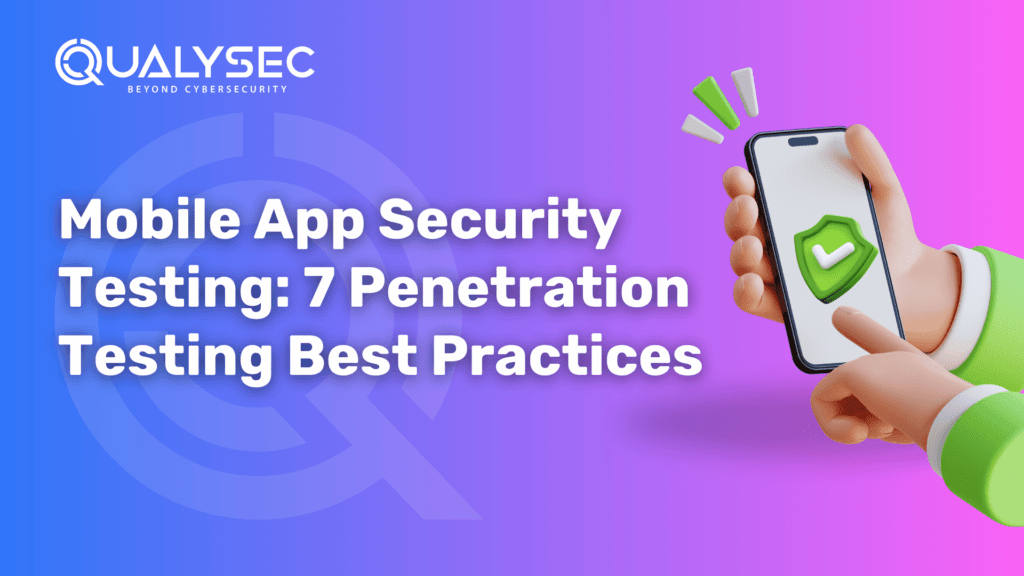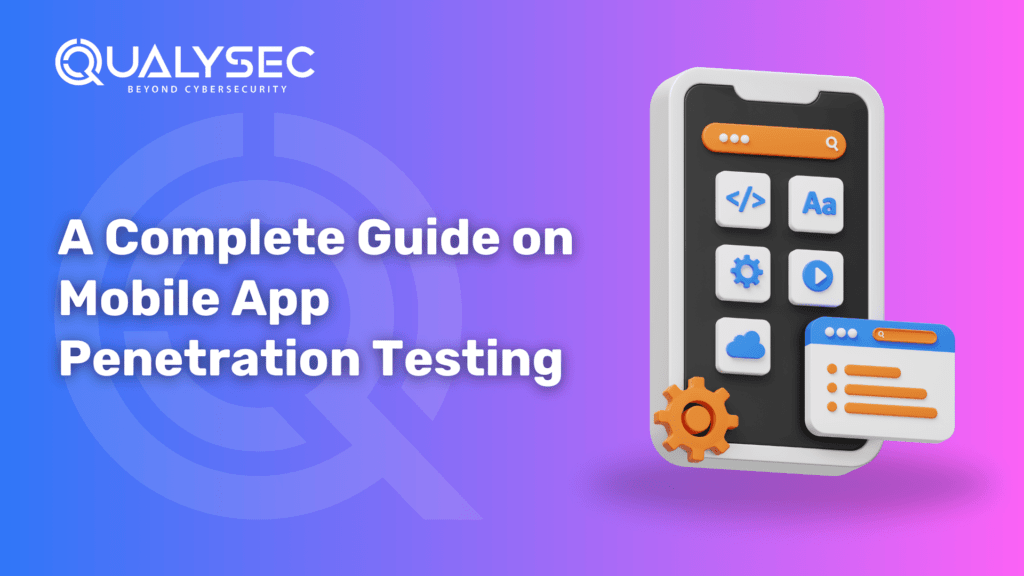Mobile App Security Testing : 7 Penetration Testing Best Practices
To reduce an application’s security concerns, developers must ensure their applications can withstand rigorous security testing. Fortunately, technologies exist to ease and even automate these security tests. Best practices can also be used to guide and educate the testing process. This post will discuss the most frequent mobile app security testing and highlight popular vulnerabilities. We’ll also go about recommended practices for app security testing and tools for safeguarding mobile apps in a CI/CD pipeline. Extensive penetration testing can prevent or minimize mobile app security errors (or breaches). As a result, app developers and businesses are using penetration testing to examine the IT infrastructure, database security, mobile applications, and other parts of the mobile app. Mobile app security best practices consider itself an essential component of the entire app security strategy. If you do not have in-house experience in mobile app pen testing, we suggest that you work with a reputable penetration testing firm. In this article, we’ll go over the fundamentals of developing an effective mobile app pen testing approach. What is Mobile App Security Testing? Protecting valuable mobile applications and your online identity from fraudulent attacks is mobile app security. This covers key loggers, malware, tampering, reverse engineering, and other types of interference or manipulation. A complete mobile app security strategy includes best practices for use and corporate procedures, along with technological solutions like mobile app shielding. Mobile app security has rapidly gained significance since mobile devices have become more commonplace in many nations and areas. An increase in mobile devices, apps, and users correlates with the trend toward more usage of mobile devices for banking services, shopping, and other activities. The good news is that banks are strengthening their security regarding customers using mobile devices for financial services with Android application penetration testing and iOS application penetration testing . What are the Common Vulnerabilities in Mobile App Security Testing? Mobile app security is critical because of the growing amount of sensitive data that mobile devices contain and our growing reliance on them. Organizations and users may safeguard their mobile apps proactively by being aware of prevalent threats and vulnerabilities. The following are some Common Mobile App Security Threats: 1. Not Enough Authentication or Authorization Insufficient authorization occurs when an application does not carry out sufficient authorization checks to confirm that the user is carrying out a task or accessing data in compliance with the security policy. Authorization processes should keep an eye on what a user, service, or application is permitted to do. Your efforts can be more at ease if you choose a tried-and-true authorization application that prioritizes policy-based configuration files over thorough authentication/authorization assessments. 2. Insufficient Session Time-Out The identifiers get invalidate when a user logs out of the program. Even in such cases, other users may interrupt and act on behalf of the users if the server is unable to invalidate the session identifiers. You must ensure the program has a logout button and wait for the correct log-out until the session is correctly invalidated. The main point is that you should download apps with common sense. 3. Server-Side Security Flaw Unauthenticated access may be avoided on the server side; nevertheless, input validation checks and limits must be integrated into the app architecture to lessen the strain on the server. The application should confirm the input data during the server processing phase and stop anomalous behavior. As you are aware, one can block some types of data from the app side and allowlist the required ones. Encryption should be used by both the app and the server when receiving and sending data. 4. Insecure Data Storage Insecure storage of sensitive data on the device may lead to vulnerability. People must always remember that sensitive data saved on devices can potentially be stolen and that data stored on devices isn’t protected from theft. Furthermore, to prevent this problem, apps should save sensitive data in keychain pairs. The data must be encrypted if the app stores information in the form of data. 5. Inappropriate Validation of Certificates The app may need to accurately verify the state, validate the SSL/TLS certificates, or refuse to. If the certificate cannot be confirmed, the client might choose to terminate the connection. If the data is not adequately verified, it may be utilized for illegal access. Furthermore, to cross-check whether a certificate is from a reliable source and whether it should come from a respectable certificate authority, you must make sure that the certificate validation in your application is completed correctly. For the best validation, you ought to be putting some recent standard forums into practice. If your business is facing these vulnerabilities and you’re worried about your business infrastructure, don’t be. Qualysec’s expert security consultants are here to help! Schedule a call with them for FREE today! Talk to our Cybersecurity Expert to discuss your specific needs and how we can help your business. Schedule a Call What Impact Can These Vulnerabilities Have on Your Business? App security issues have both short-term and long-term effects. Immediate financial consequences and lost business may arise from the ensuing reputational harm. For this reason, a crucial element of mobile device management is application security. Long-term effects can sometimes have greater significance than immediate ones. There are multiple ways an attacker can exploit security flaws in your app. For instance, they can carry out data theft and man-in-the-middle (MITM) attacks or use ports for unauthorized communication. Statistics on Mobile App Hacking The numbers around mobile app hacking are alarming. These are a handful: Over 12 million users’ login details were made public by the Slack mobile app hack. In the end, thirteen distinct Android apps exposed data belonging to as many as 100 million users. Up to 21 million users of the parking application were affected by the hack. A breach compromised the personal information of 650,000 users on the COVID-19 passport app. Identifying Vulnerabilities in Mobile Apps: Key Penetration Testing Techniques As the name implies, mobile app penetration testing simulates






